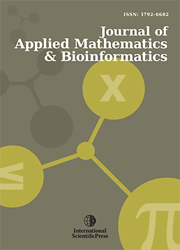Journal of Applied Mathematics & Bioinformatics
Predictive Dynamic Linear Models for External Reserves-Economic Growth Nexus A Case Study
-
 [ Download ]
[ Download ]
- Times downloaded: 10449
-
Abstract
Over the years, there has been a debate whether there is a need to beef up the level of foreign reserves or trim them down, and this debate is becoming more interesting especially in developing countries. It is usual for countries in the world to hold external reserves in order to have a favourable level of exchange rate especially with a view of stabilizing and establishing a robust economy. Most previous studies had concentrated on modeling External Reserves-Economic Growth nexus with classical time series and econometric models with static parameters. In this paper, we propose a Bayesian time-varying parameter dynamic linear model for econometric modeling of external reserves-economic growth nexus using the Nigerian economy as a case study. We assess the predictive performance of external reserves on economic growth in comparison with some selected macroeconomic variables. Our empirical findings reveal that external reserve has the least Mean Squared Prediction Error (MSPE) among the several one-regressor models considered over the years, while the model involving the combination of external reserves and capital expenditure has the least MSPE among the two regressor models considered in our econometric analysis. The economic implications of these results were discussed and used to make policy recommendations.
